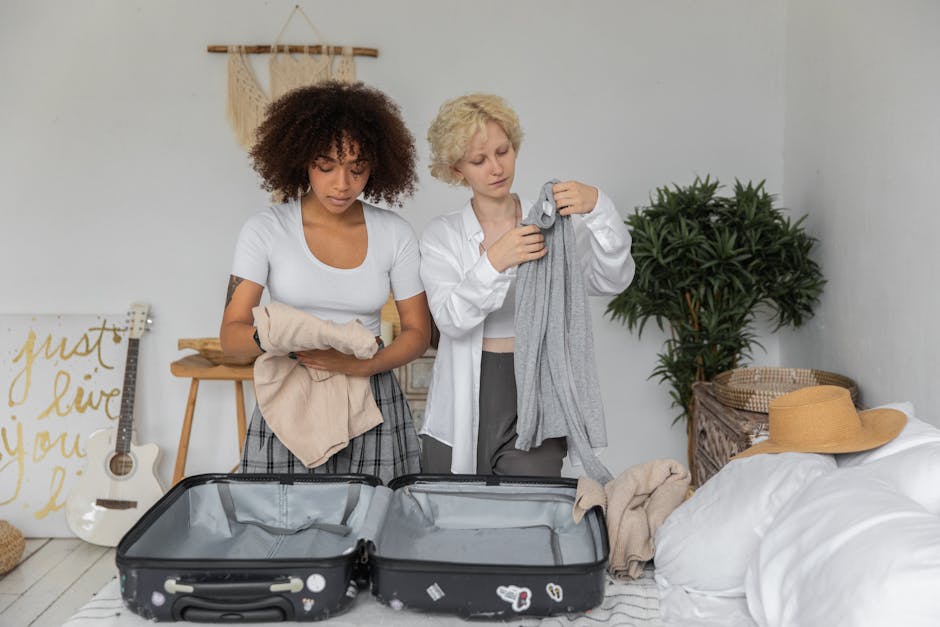Packing Hacks: How to Travel Light and Smart
Traveling light doesn't just simplify Mastering the art of packing light requires a mix of strategic planning, smart choices, and understanding what you truly need versus what you think you need. With the right approach, you can ensure a more enjoyable and hassle-free travel experience.
1. Start with the Right Luggage

The foundation of traveling light begins with choosing the appropriate luggage. Opt for a carry-on suitcase or a lightweight backpack that meets airline size requirements. Hard-shell suitcases provide durability and structure, while soft-sided ones offer flexibility for tight spaces. Backpacks are ideal for mobility, especially if your trip involves walking long distances or uneven terrains.
When selecting luggage, consider compartments and organizational features. Built-in dividers, compression straps, and external pockets can make packing easier. Ensure the luggage is lightweight even when empty to maximize its usability without adding unnecessary weight.
| Luggage Type | Best For |
|---|---|
| Carry-On Suitcase | Short trips, business travel |
| Lightweight Backpack | Adventure travel, walking-heavy trips |
| Soft-Sided Bag | Flexibility in tight storage spaces |
2. Pack Multi-Functional Clothing
Clothing often takes up the majority of space in your luggage. A practical way to minimize bulk is by choosing versatile pieces that can serve multiple purposes. For example, pack neutral-colored tops and bottoms that can be mixed and matched to create different outfits. Convertible items like pants that turn into shorts or dresses that double as casual wear are particularly useful.
Avoid packing "just in case" items. Instead, focus on layering clothes for varying weather conditions and bringing travel-friendly fabrics like merino wool or polyester blends, which resist wrinkles and dry quickly.
3. Use Packing Cubes and Compression Bags
Packing cubes are a game-changer for staying organized while optimizing space. They allow you to compartmentalize items by category (e.g., shirts in one cube, underwear in another) and make it easier to locate specific items without rummaging through your entire bag. Compression bags are another option for reducing the volume of bulky items like jackets or sweaters.
- Roll clothes tightly before placing them in cubes to save space.
- Use vacuum-seal bags for larger items like coats if necessary.
- Designate one cube or pouch for essentials like toiletries and chargers.
4. Limit Toiletries to Essentials
A common pitfall of overpacking is bringing full-sized toiletries or excessive beauty products. Many accommodations provide basic toiletries such as shampoo and soap, so check ahead before packing your own. For personal items you must bring, use reusable travel-sized containers under 100ml to comply with airline liquid regulations.
Consider solid alternatives like bar soap, solid shampoo, or toothpaste tablets to avoid liquid restrictions altogether. These products are compact and eliminate the risk of spills during transit.
5. Plan Around Your Destination
Your destination plays a significant role in determining what to pack. Research the climate and cultural norms beforehand to avoid unnecessary items. For instance, tropical destinations may require lightweight clothing and sandals, while colder climates necessitate layers and sturdy boots.
If you're heading to a city known for shopping or unique markets, leave some space in your luggage for souvenirs or local finds instead of overpacking from the start.
6. Embrace Technology Wisely
The right technology can make traveling lighter and smarter. Replace bulky books with e-readers or tablets that hold multiple titles at once. Use your smartphone for maps, boarding passes, and itinerary management rather than carrying printed versions.
Avoid overloading on tech gadgets by bringing only what you'll use regularly, no need for multiple cameras or chargers if a single device suffices. A universal adapter is also a handy tool if you're traveling internationally.
7. Practice Pre-Trip Packing Tests
A few days before departure, do a test run by packing everything you plan to bring into your chosen luggage. This allows you to identify unnecessary items early on and make adjustments before it's too late. It also ensures you'll have enough room for any last-minute additions or souvenirs on your return trip.
This practice not only improves efficiency but also gives peace of mind knowing you're well-prepared without overpacking.
Packing light doesn't mean compromising comfort or preparedness, it means focusing on quality over quantity and being intentional about what truly matters during your travels. By incorporating these strategies into your routine, you'll likely find yourself enjoying smoother journeys with less stress.
Adopting these packing hacks ensures you'll have exactly what you need without dragging around excess baggage. Whether you're planning a weekend getaway or an extended trip abroad, traveling smartly begins with thoughtful preparation and mindful choices tailored to your destination and personal needs.
This article was generated by AI